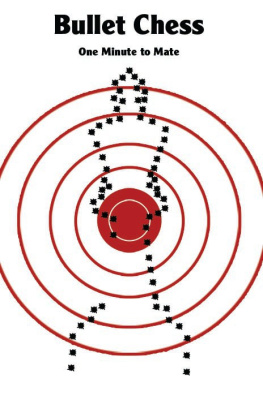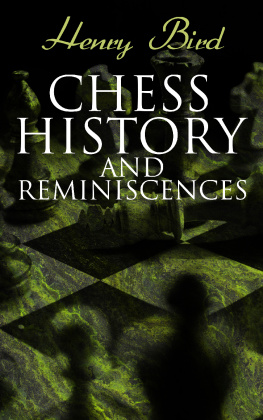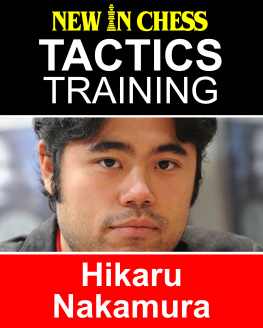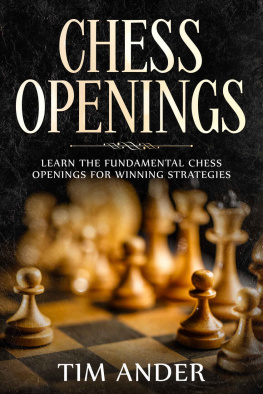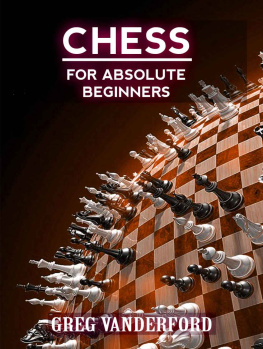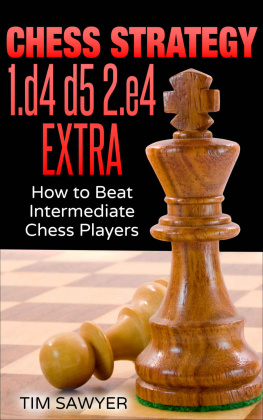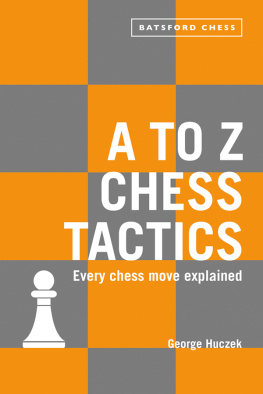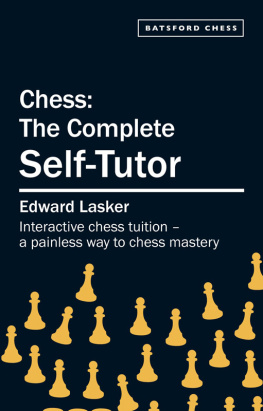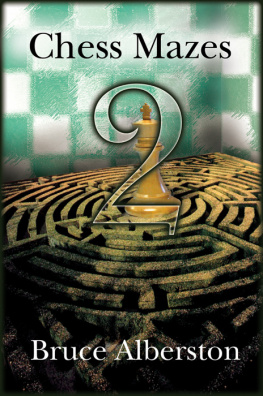
Bullet Chess: One Minute to Mate
by
Hikaru Nakamura & Bruce Harper
ISBN: 978-1-888690-67-5
Copyright 2009
Hikaru Nakamura and Bruce Harper
All Rights Reserved
No part of this book may be used, reproduced, stored in a retrieval system or transmitted in any manner or form whatsoever or by any means, electronic, electrostatic, magnetic tape, photocopying, recording or otherwise, without the express written permission from the publisher except in the case of brief quotations embodied in critical articles or reviews.
Published by:
Russell Enterprises, Inc.
P.O. Box 3131
Milford, CT 06460 USA
http://www.russell-enterprises.com
Cover design by Janel Lowrance

Foreword
My introduction to chess likely mirrored that of most American chess players: after learning the movements of the pieces and basic rules of the game I wanted to play as soon and as quickly as possible. No learning how to mate with the two bishops versus lone king, king triangulations or back-rank mates for me. No sir, I wanted to play! After being routinely clobbered by my chess teacher I soon graduated to club play or, in my case, to coffee-house chess. After all, my club was indeed a coffee-shop in the university district of Seattle Washington called The Last Exit. The Exit was a magnet for Seattles best players and it was there that I developed a close circle of friends. We would play five-minute or blitz chess and wile away the afternoon and evening hours. Some in my circle were more adventurous and we would accelerate our tempo of play to three-minute chess and even one-minute or bullet games.
Bullet was a great deal of fun, and as I was fast but not good, it was an attractive way to spend the day. I fancied myself at such speeds, as I had excellent hand and eye coordination and could get fifty and even sixty moves in before the flag on my clock would fall. There were several obvious drawbacks to physical bullet games: even among the very best players, time scrambles at the very end of the games would inevitably lead to pieces being literally dropped onto wrong squares, pieces sliding beyond the intended square, hands colliding in mid-air leading to even more dropped pieces, pieces either falling or flying off the table, and scrambles to recover or replace the missing-in-battle would be interchanged with the inevitable illegal move...
Because our bullet games were played with a friendly banter, such issues didnt really bother us and we simply continued, even if we felt cheated with an undeserved loss or two.
Because bullet games were so difficult to control physically, before too long we reverted back to regular speeds of three- and five-minute games. Still, the lure of bullet remained great because these games were so much fun and I often played to exhaustion!
While many lengthy musings were given to the idea of being able to control bullet games, such as not allowing the clock to be pressed until the piece was righted on a square; or requiring that illegal moves be pointed out immediately or else were allowed to stand, no one ever really came up with a completely satisfactory solution for controlling piece and hand movements. Nonetheless, for my whole chess career, Ive enjoyed bullet games.
Then along came the internet and chess servers and bullet chess was changed forever. At last, a way of controlling the input of moves had been devised. No more pieces landing on the wrong square, hand collisions or illegal moves. Now it was about good play and of course mouse-inputting speeds! The fun of bullet chess could be enjoyed around the world at any time of the day.
Bullet chess has mostly lurked on the periphery of mainstream tournament play. While attending major open events, it is common to see players blitzing and playing bullet in the hallways and corridors waiting for the rounds to start. For the quick of eye and hand, as well as the tactically gifted, bullet is an endless source of fun.
To my knowledge there has never been a book devoted to serious bullet play (if I may use an oxymoron), which is why I eagerly undertook the assignment to write this foreword to this work by FIDE Master Bruce Harper and grandmaster Hikaru Nakamura. Hikaru (or H-Bomb as he is known) is a bullet legend on internet chess servers around the world. His bullet skills are simply extraordinary, and watching him play is a marvelous, and at times jaw-dropping, experience. He is that good.
Drawing from his games and the games of others, his experiences and how he thinks about bullet, the reader is welcomed into a fascinating parallel universe of the chess world. It is not to everyones liking, and indeed former world champion Mikhail Botvinnik would turn over in his grave to see such a young talent as Hikaru championing bullet. But it doesnt seem to have hurt Hikarus real chess results, to put it mildly, and bullet is fun and addictive. And yes, bullet can help you in your tournament games, as ideas are reinforced, helping with your calculation during tournament play.
A few summers ago, when American grandmaster Larry Christiansen and his wife Natasha came to spend a couple weeks at our home in Amsterdam, one of the first stories Larry told me by way of our catching up was with what happened to his laptop. To paraphrase, I was playing bullet and played a really sweet game building up a nice mating attack, suddenly I had to rush my move and ^*x%#@ed it up and lost on time before I could mate. I was so mad! I meant to smash my fist onto the table in disgust but somehow caught the top end of my laptop and smashed it down. The top met bottom with a crash. Uh-oh... I broke my screen, wrecking my $2,000 state of the art little friend... We both fell into a good laugh. Every bullet player knows the story only too well. (Hopefully not all of us have destroyed our computers. Ive managed to avoid that trap. So far.) Enjoying Larrys works such as Storming the Ramparts, Larry cites a number of his bullet games, explaining how a typical bullet mating pattern helped him pull off a coup.
Bullet players should really understand this above all else: play bullet for fun! It behooves us if we are serious about our bullet skills to give a bit more thought to bullet and how to improve our play. Time management is crucial: in bullet a bad move is indeed better then no move at all! The initiative is far more important than material. King safety is of paramount importance as it allows you to play quickly, free of concerns about mating attacks.
What bullet really teaches us is pattern recognition. Specifically, mating and tactical patterns that win material. All these themes are chapters in this work and critical components of playing bullet successfully. This book was written with an emphasis on enjoyment and fun. I suspect that you, dear reader, will be treated to more blunders in one book than youll find in a hundred others combined. A record not meant to be broken.
Certainly this book will not teach you to be as good as Hikaru, but it will teach you to be a sharper tactician and a much stronger bullet player.
Enjoy!
Yasser Seirawan
Amsterdam
August 2009
Introduction
The idea of a book about one-minute (bullet) chess was first conceived in the spring of 2008, when American grandmaster Hikaru Nakamura visited Vancouver, British Columbia.
At the time, few members of the Internet Chess Club were unaware of the exploits of Smallville, the principal handle used by grandmaster Nakamura. His domination of the other ICC bullet players was astounding several hundred rating points separated him from his rivals. if such a term can be used in this context. As all chess players know, someone always has to win in the end, but the Smallville phenomenon defied common sense.
Next page
